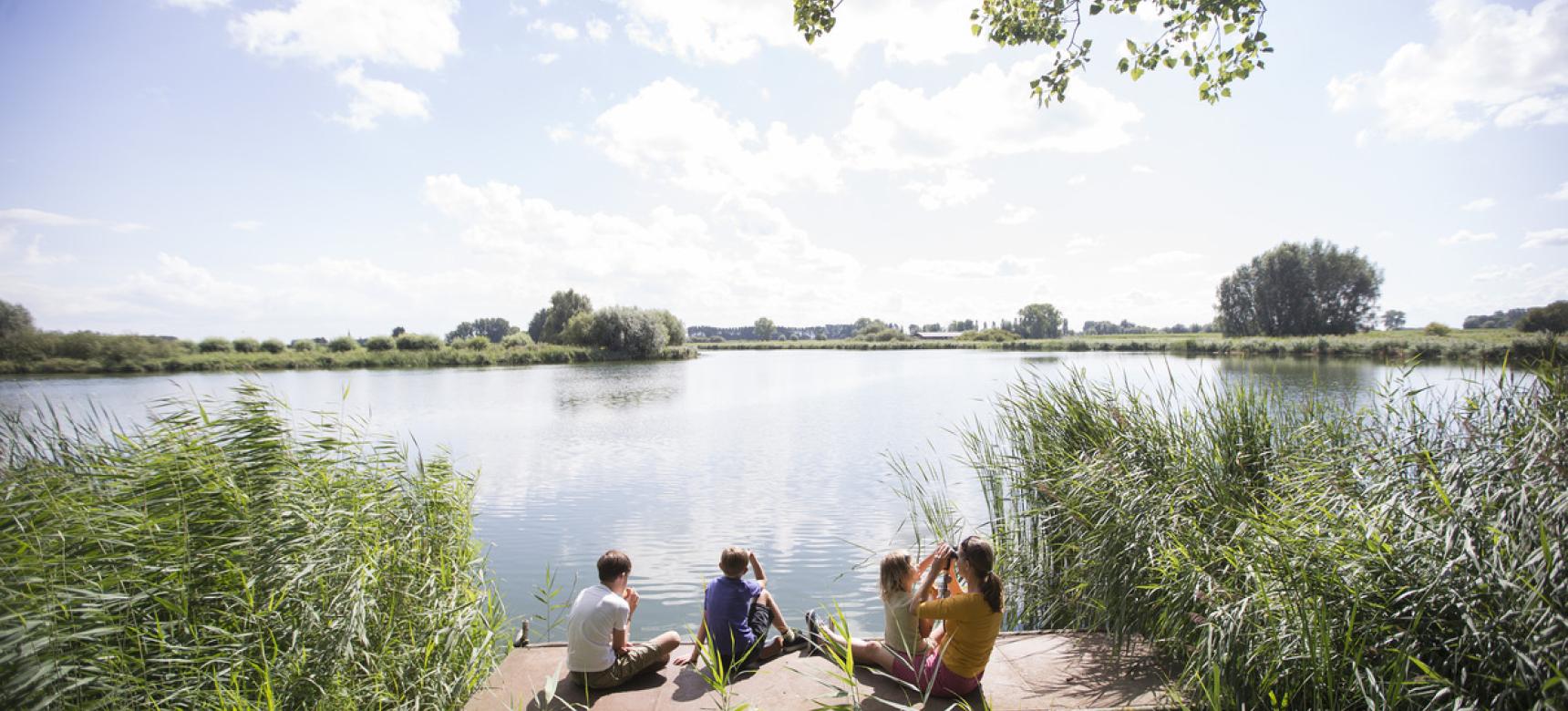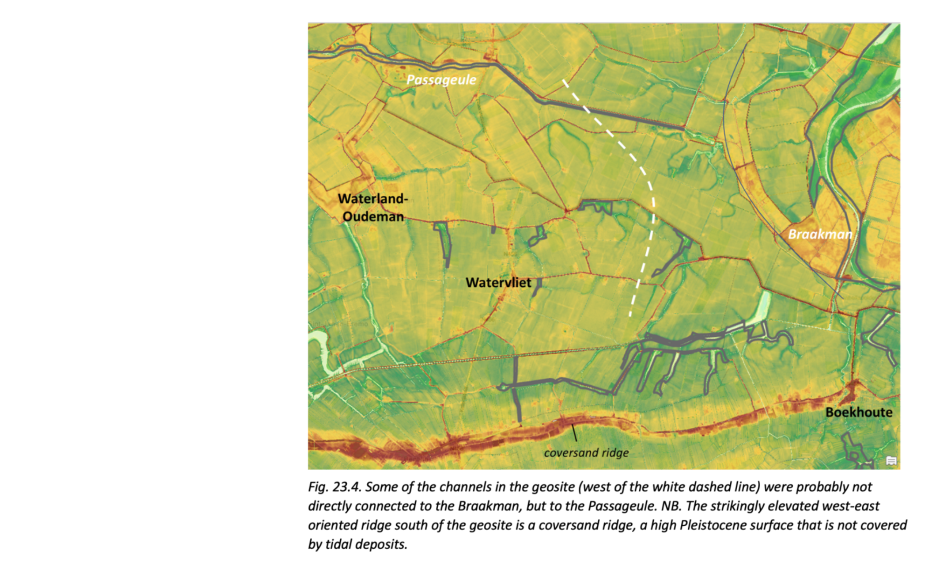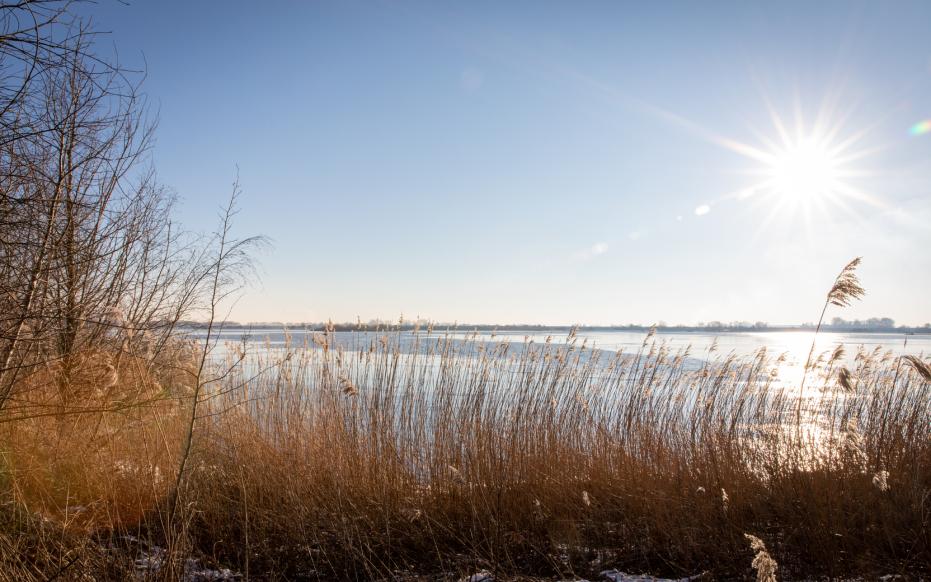Origin of the landscape
As the rate of sea level rise slowed during the Holocene, a contiguous protective barrier of beach ridges formed along the coast, shielding the hinterland from the influence of the sea beginning about 3,800 years ago. The moorland continued to expand. However, the protective coastal barrier was gradually broken down again starting about 2600 years ago. In the following centuries, the tide penetrated further inland. Initially, probably at the mouth of today's Western Scheldt, there was the small peat river the Honte. Due to sea intrusions it grew further eastward into an estuary. The Honte also became connected to the Scheldt, which then flowed to the sea via the Eastern Scheldt. A large part of Zeeuws-Vlaanderen changed into a tidal area.




